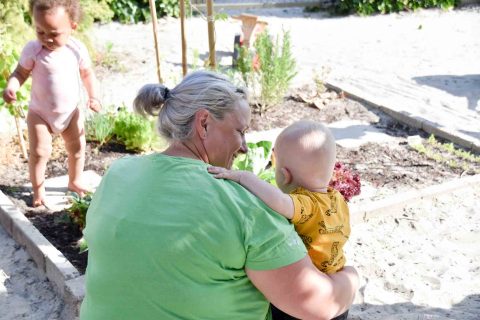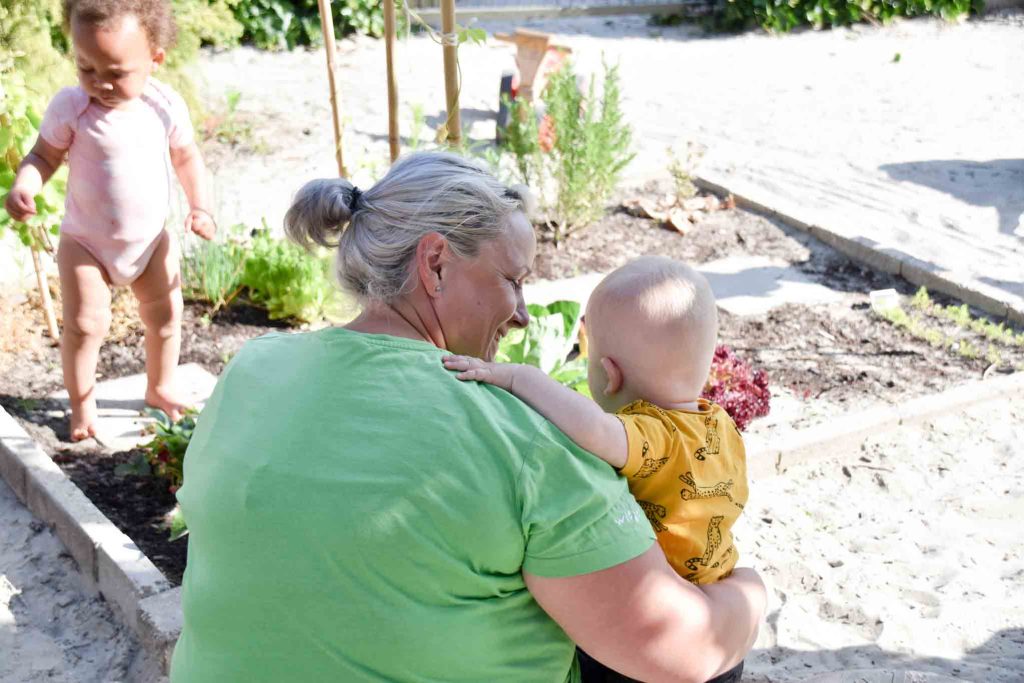Social development is about interacting with others. Children gain more and more human knowledge, learn to empathize with others, to help others and to share. Social development actually runs through all other development areas. But it doesn't happen by itself – it has to develop. Childcare and out-of-school care is an excellent environment for this; a mini-society where children come into contact with peers.
Babies look for interaction
Babies love to play together in the playpen. You see them looking at each other and discovering each other. But they are also very interested in the faces of adults, they can look at them for a long time. They are looking to interact with the other. That is why our pedagogical staff regularly play with the babies on the floor and take the rest and time for the baby's amazement.
Toddlers play side by side
A toddler becomes more and more interested in peers. They are increasingly playing next to each other (parallel play) but they are not yet really playing with each other. So they may occasionally have conflicts; for example, if one takes the other's bucket because they are both playing in the sandbox with their own game. We guide the children in resolving the conflict and identify the emotions of the other.
Toddlers play with each other
Play is, and remains, the leading activity. All development areas actually come together here, including social development. In the pretend play, they imitate adults and practice getting along. They learn the social 'rules' that we know in society. And even better: they learn from and with each other.
Schoolchildren
From the age of about 7, children learn to decentralize: to view the situation not only from their own perspective, but also from the perspective of others. They can understand more and more why the other person reacts in this way or what the other person feels in an argument. That will of course still be difficult, but practice makes perfect!
When children get older, social life becomes important in another way as well. It's not just about play and friendship, but also about status in the group. Children want to belong.
At Kibeo we often do group activities where children have to work together and get to know each other and themselves. We also (unconsciously) practice conversational techniques such as hearing both sides, introducing yourself and expressing your opinion. Sometimes there are conflicts, but we also resolve them together. Children are given the time and opportunity to try this themselves first. We provide a safe and relaxed atmosphere in the group.
Did you know….
… children also copy a lot of social behavior from adults in the area? It is therefore very important to set a good example yourself. At Kibeo we are aware of this and we like to set a good example for children.
Do you notice that your child finds it difficult to interact with others? Here are two tips for at home:
- Guide the interactions
Sit down when your child is playing with others and chat or play along. Watch how the children react to each other and express the feelings and behaviors. You're basically captioning the situation. “Do you see that Rose says no? She doesn't like you taking it away. Just give it back”. In this way, the child learns to recognize signals from others and to respond accordingly. Look at it positively: name the behavior you want to see, instead of how not to do it. - Give compliments
Call it when it goes well. “How sweet of you to share this with Kerem”. Because of the positive feedback, there is a good chance that this behavior will be repeated.
You can read more about personality development in the next blog.


